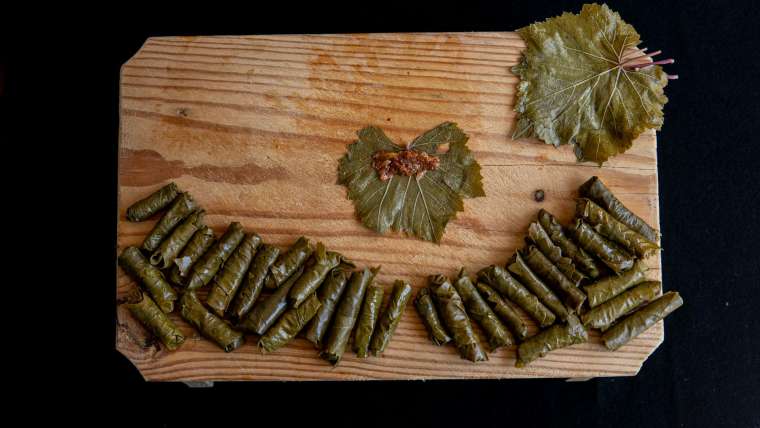Uncover the secret to living gluten-free deliciously with this comprehensive guide for celiacs seeking safe and satisfying dining options.
Table of Contents
Living with celiac disease can present challenges when it comes to food choices, but it doesn’t have to mean giving up on enjoying delicious and satisfying meals. By understanding the condition, knowing what foods to avoid, and exploring gluten-free alternatives, individuals with celiac disease can navigate their dietary restrictions with confidence. Here’s a comprehensive guide to help you live deliciously without gluten:
Celiac Disease: Understanding the Condition
Celiac disease is an autoimmune disorder that affects the small intestine. It is triggered by the consumption of gluten, a protein found in wheat, barley, and rye. When individuals with celiac disease eat gluten, their immune system responds by damaging the lining of the small intestine, leading to various symptoms and complications.
Some common symptoms of celiac disease include digestive issues, fatigue, skin rash, joint pain, and nutrient deficiencies. If left untreated, celiac disease can cause serious health problems, such as malnutrition, osteoporosis, and an increased risk of other autoimmune disorders.
Gluten-Free Living: What to Avoid
To effectively manage celiac disease, it is crucial to eliminate all sources of gluten from your diet. This means avoiding foods that contain wheat, barley, and rye in any form. Some common sources of gluten include bread, pasta, cereals, baked goods, beer, and certain processed foods that use gluten as a binding agent.
It’s important to read food labels carefully and be aware of hidden sources of gluten, such as sauces, dressings, and seasonings. Cross-contamination can also occur in shared kitchen spaces or restaurants, so it’s essential to communicate your dietary needs to food preparers to prevent accidental exposure to gluten.
Gluten-Free Alternatives: Exploring Delicious Options
Living gluten-free doesn’t mean sacrificing flavor or variety in your diet. There are plenty of tasty and nutritious alternatives to traditional gluten-containing foods that can satisfy your cravings and keep you healthy.
| Meal Type | Safe Gluten-Free Options | Avoid |
|---|---|---|
| Breakfast | Eggs, Fresh Fruit, Gluten-Free Oatmeal, Gluten-Free Toast | Regular Pancakes, Waffles, Pastries |
| Lunch | Grilled Chicken Salad, Quinoa Salad, Rice Bowl with Veggies | Sandwiches, Wraps, Pasta Salad with Regular Pasta |
| Dinner | Grilled Salmon with Roasted Vegetables, Steak with Mashed Potatoes, Stir-Fry with Rice Noodles | Breaded Chicken, Pasta Dishes with Regular Pasta, Pizza |
| Snacks | Popcorn, Nuts, Rice Cakes, Fresh Fruit | Pretzels, Crackers, Granola Bars with Gluten |
Some popular gluten-free grains and flours include rice, quinoa, buckwheat, almond, and coconut flour. These ingredients can be used to make gluten-free bread, pizza crusts, pancakes, and baked goods that are just as delicious as their gluten-containing counterparts.
Fruits, vegetables, lean proteins, dairy, and naturally gluten-free whole foods should be the foundation of a celiac-friendly diet. Incorporating a variety of nutrient-dense foods into your meals will help you maintain a well-balanced and satisfying diet without gluten.
Embracing a Gluten-Free Lifestyle with Confidence
Living with celiac disease may require some adjustments to your eating habits, but it doesn’t have to be a limiting experience. By educating yourself about the condition, exploring gluten-free alternatives, and seeking support from healthcare professionals and support groups, you can embrace a gluten-free lifestyle with confidence.
Remember that prioritizing your health and well-being is essential when managing celiac disease. Listen to your body, communicate your dietary needs effectively, and never compromise on the quality of the food you consume. With the right knowledge and mindset, living deliciously without gluten is not only manageable but also enjoyable.
FAQs:
Q1: Can I still enjoy dining out while following a gluten-free diet?
A1: Yes, many restaurants now offer gluten-free options on their menus. Just be sure to communicate your dietary needs to the server and ask about their gluten-free preparation practices to avoid cross-contamination.
Q2: Are gluten-free products more expensive than regular ones?
A2: While some gluten-free products may be pricier, there are plenty of naturally gluten-free foods that are affordable, such as fruits, vegetables, and grains like rice and quinoa. Planning meals around these options can help you save money.
Q3: Is it necessary to take gluten-free supplements while on a gluten-free diet?
A3: It’s always best to consult with a healthcare professional before starting any supplements. In most cases, a well-balanced gluten-free diet can provide all the essential nutrients your body needs. However, vitamin and mineral deficiencies can occur, so speak to your doctor about appropriate supplementation if necessary.
Q4: How can I ensure I am getting enough fiber on a gluten-free diet?
A4: Incorporate plenty of naturally gluten-free high-fiber foods into your diet, such as fruits, vegetables, beans, and gluten-free whole grains like quinoa and brown rice. You can also add chia seeds, flaxseeds, and psyllium husk to your meals for an extra fiber boost.





